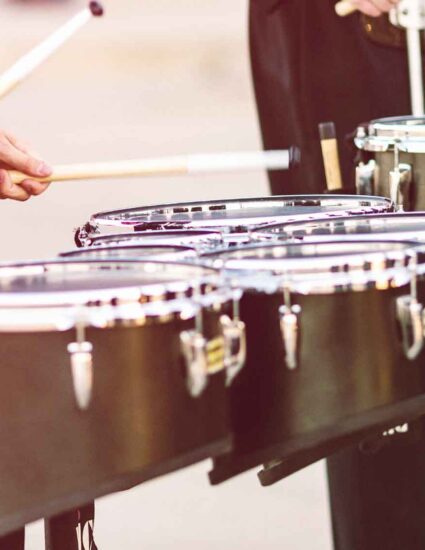In order to memorize drumline music, first you have to work through the music slowly.
Take 1 or 2 measures at a time—or a few more if you’re a more advanced player—and break down each figure into its core components.
When you break down each figure into its core components, you learn it slowly without any extra stuff attached.
You already learned how to play the instrument. But now, that means getting rid of rolls, flams, advanced sticking patterns, or other extra stuff that makes drumline music unique, challenging, and fun.
You obviously need to learn those things, but you can add them in later—after you’ve learned and memorized the fundamentals of your drumline music.
For example—
Think of each rhythmic section or phrase in its foundation rhythm. We call this a check pattern.
A check pattern is one that you use to check if you’re playing the figure correctly.
It becomes a rubric or measurement tool which you can check your progress on learning and memorizing figures.
So if you had an advanced piece of music like this.
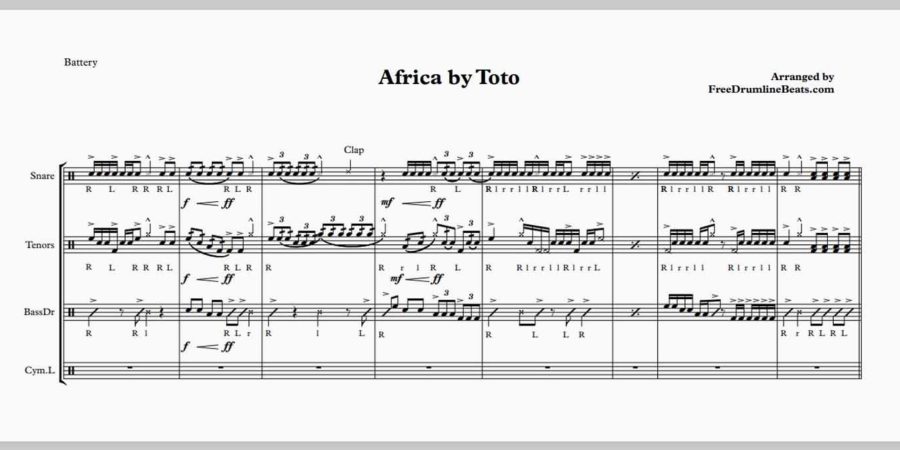
What could you take out?
Get rid of all rolls, flams, and advanced stickings first.
You’re left with a basic boring rhythm.
It might be boring but it’s easy.
And easy to play means easy to learn—and easy to memorize.
Do this 1 or 2 measures at a time (or more if you can), probably no more than 4, 6, or 8 measures at a time.
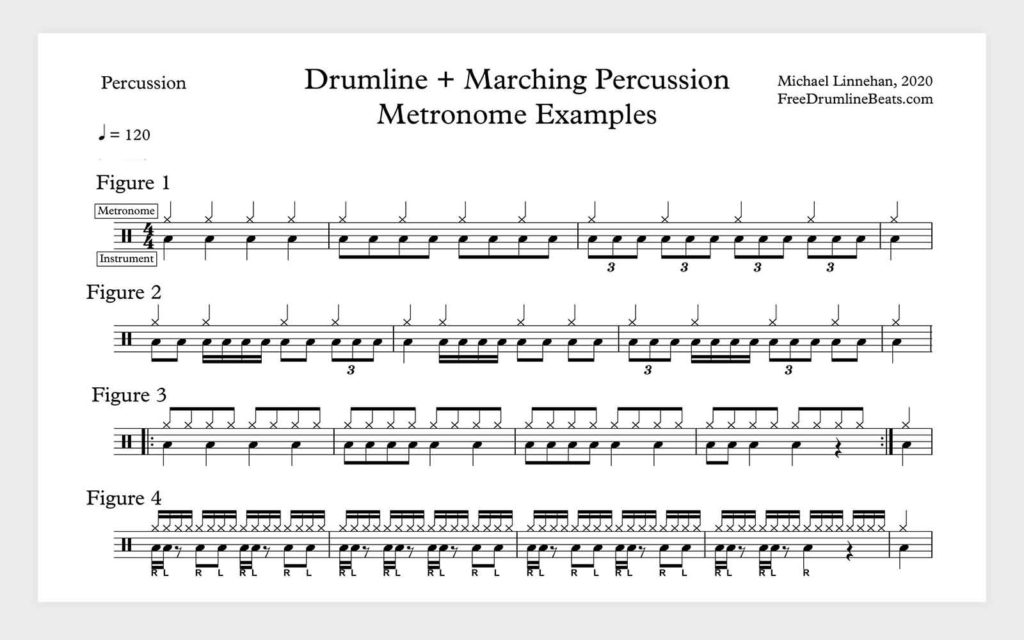
Look for patterns.
If your music repeats every few measures, then learning one check pattern will accomplish a lot, and help you learn more of the music faster.
But if it’s all custom and unique and different every bar you’ll have to go through each one little by little.
(And it shouldn’t be—or your writer needs to learn our 5 Sibelius Hacks for Drumline arranging!)
Once you’ve learned the music little by little with check patterns, it’s time to memorize it.
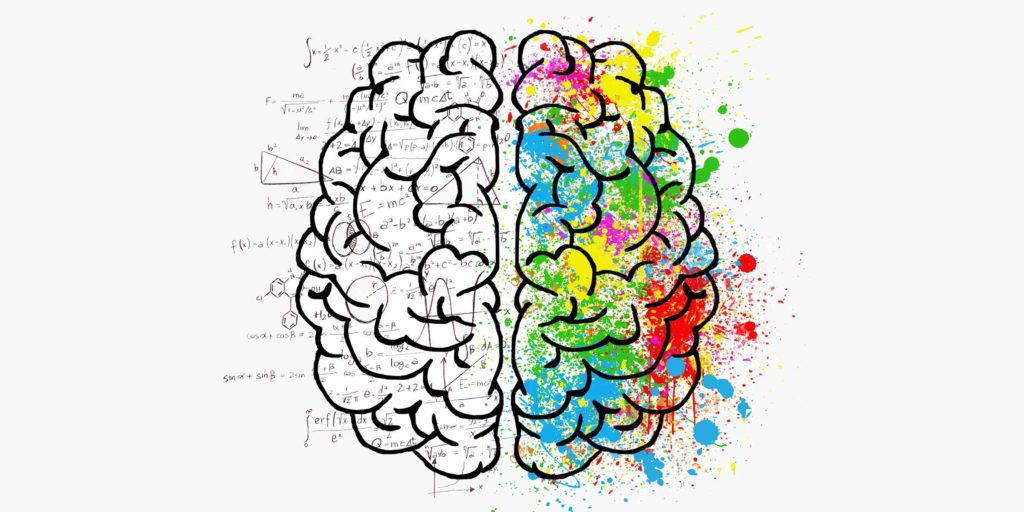
What *is* memorization?
Memorization is the process of converting a memory from short-term to long-term in your brain.
Neuroscientists and psychologists understand how this process works.
And it is simpler than it seems. All you have to do is remember.
Sounds easy, right?
What I mean is: You have to remember in order to remember.
If you’re reading your music over and over or hearing your music over and over you’re keeping that information in your brain in the short-term memory storage.
You have to convert it to long term.
The way to do that is to force yourself to recall the information.
That means look at the music remember what it is then look away from the music and play it from memory.
Do this 1, 2, or 4 measures at a time, and add sections little by little.
Look down, check in, remind yourself—but then force yourself to look away.
Every music teacher in the world understands this process.
But very few explain in such clear terms. The entire point here is that you have to recall.
Don’t read. Remember.

Break it up.
You can do this in very small chunks. One measure at a time will work.
It will take a long time, of course. But it does work.
So look down, check-in, remember… but then look away and play from memory.
Every musician and music teacher in the world also understands the difference between “I remember” and “I memorized.”
What’s the difference?
The difference is practicing until you can’t get it wrong.
It’s one thing to convert information to long term memory—i.e. memorize—your music.
It’s something completely different to remember it perfectly every single time.
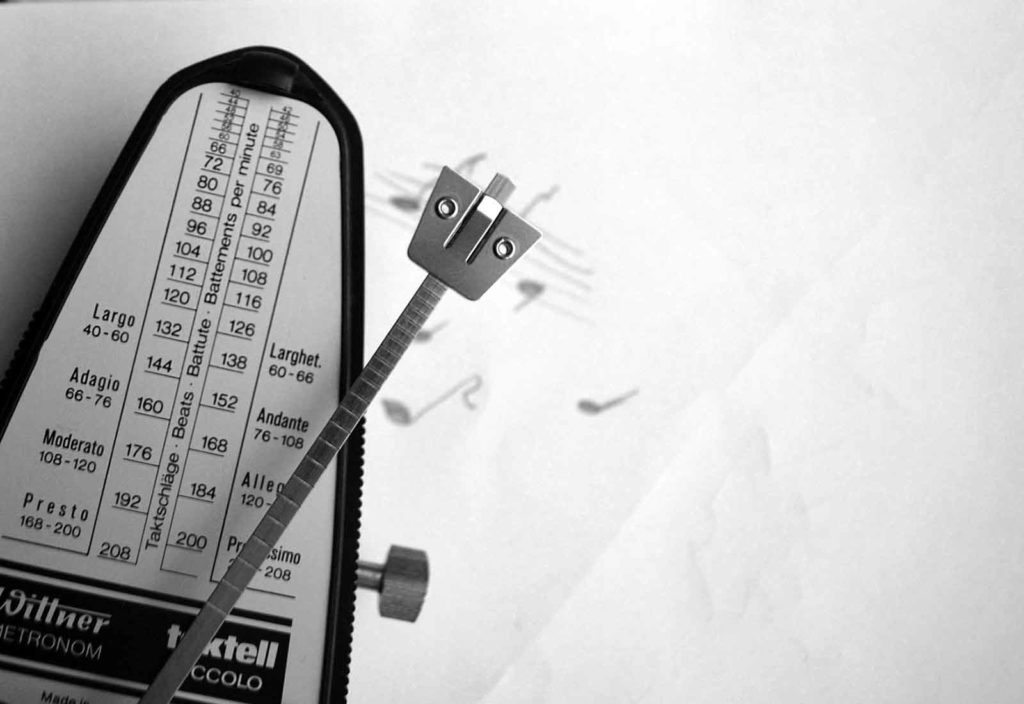
Muscle memory
Muscles don’t have memory.
When people talk about “muscle memory,” they really mean new pathways formed and fortified in the brain.
Once the information is in your brains long-term storage it must be remembered over and over and repeated over and over until its pathways are formed and strengthened in the brain by repetition.
Play it again.
And after you’ve played it again, play it again.
Then sleep on it (brains rewire themselves while we sleep for optimized performance the next day).
Then play it again.


